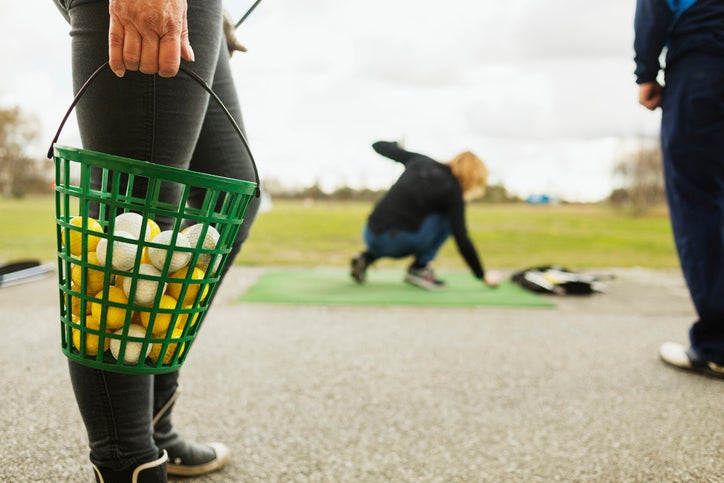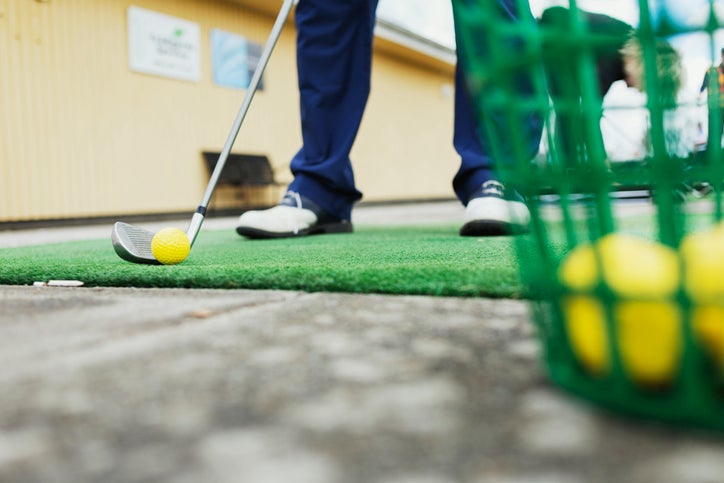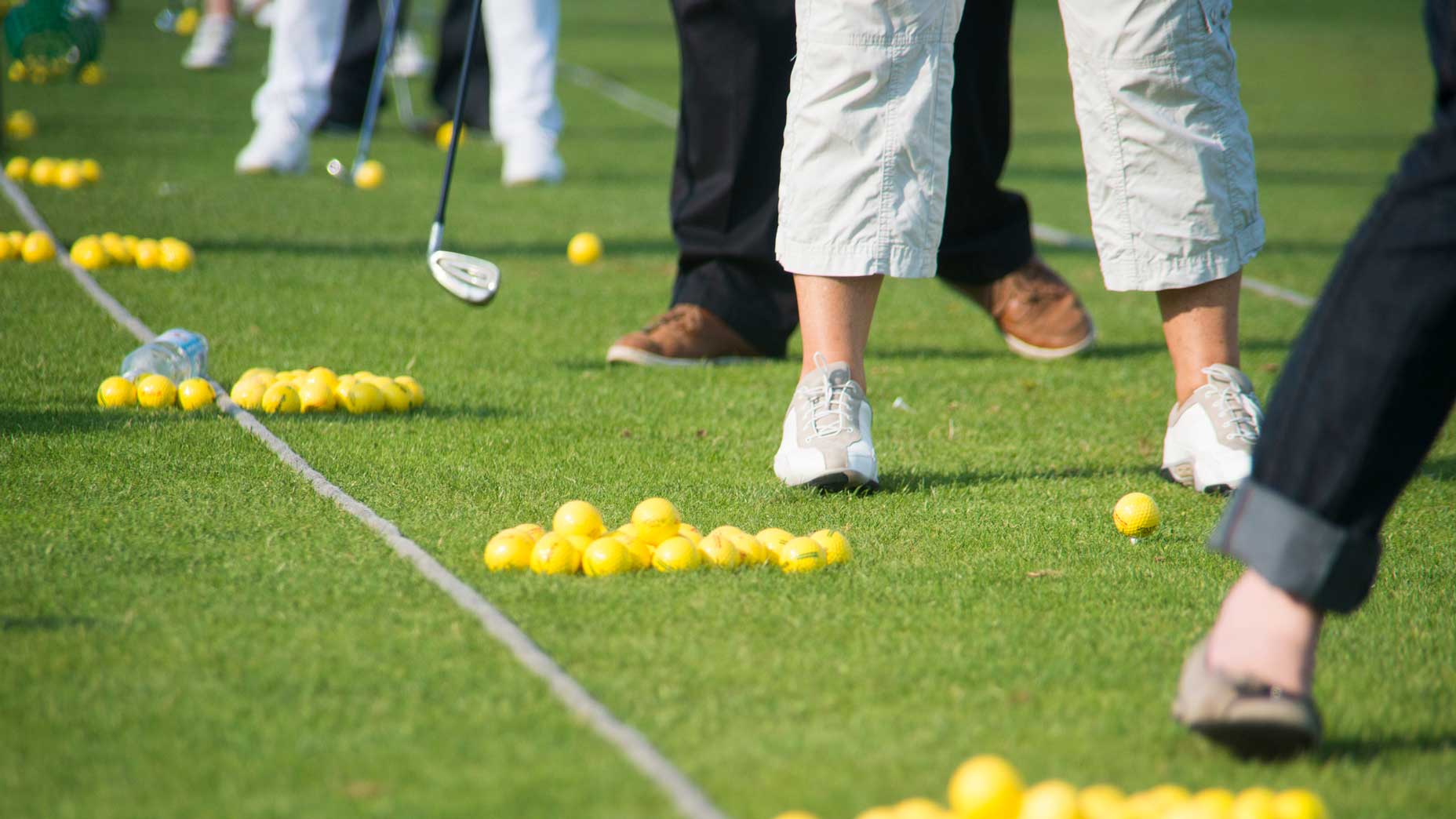5 important driving-range etiquette rules nobody tells you
- Share on Facebook
- Share on Twitter
- Share by Email

Getty Images
We all talk about etiquette on the golf course, but what about your manners on the driving range? In some ways it’s more important. You are, after all, situated in closer quarters to your fellow golfers on a driving range, yet we spend all of our time talking about on-course etiquette and none talking about all the time we spend on the range.
I’ve been a driving range rat my whole life, and along the way I’ve encountered all kinds of behaviors. Indeed, I’ve probably exhibited many of them myself, and after a series of trial-and-error, I’ve settled on a few pieces of driving range etiquette that golfers should keep in mind the next time you decide to squeeze-in a practice session.

1. Don’t ‘spread’ stuff outside your station
Nestling-in for a beefy range session can bring with it lots of baggage — literally. Unlike a course where you’re constantly on the move, hitting one shot at a time and returning your club back into your bag, the driving range means balls, buckets, training aids, sweatshirts, and switching around between lots of different clubs that you don’t necessarily need to return to your bag right away.
I’m not here to tell you you need to keep your station pristine, but you do have a duty to prevent it from being messy, especially when that mess starts spreading to other bays. When the range is busy, and another golfer tries to get going on a spot next to you, it’s unfair to subject them to your mess.

2. Get your range balls first
This may be a slightly controversial one, especially when it’s a busy range, but I’m not a fan of golfers who run to an empty bay, place their bag there, then go and get their range balls. Obviously it’s less of an issue when the range isn’t busy, but when it is, it’s golf’s version of people putting towels on beach chairs by the hotel swimming pool and walking away indefinitely. It doesn’t just make things slower, but it’s also inconsiderate, because it means you’re forcing your fellow range-goers to wait around for no good reason. Getting your golf balls first means you’ll be ready to go when a bay does open up.

3. Don’t linger
Public driving ranges can get busy, so don’t treat your time in the bay as a leisurely swan song. Just because you have a bay, doesn’t mean you get to move in. Take the time you need, but keep a consistent pace. You don’t need to rush through hitting all your golf balls, but don’t pause to take long phone calls, and when you’ve hit your last shot, pack up your stuff and leave. Just like keeping a prompt pace-of-play on the course, your fellow golfer behind you will appreciate it.

4. Don’t be loud
We touched on it above, but you can be loud (and rude) in two ways on the driving range: You can do things like take phone calls and play music, or you can be overly expressive about whatever is happening in your own golf game. I don’t care if you’re angry or pleased with whatever shot you just hit. Or that you have an urgent call. Keep it to yourself, or excuse yourself from the range. This is not your driving range, it’s our shared driving range, which means making it a pleasant place for all golfers.

5. A little chatty is fine, but don’t be too chatty
Look, chances are that you’re at the driving range for the same reason as your fellow golfer: For a little bit of golf swing therapy. You may, along the way, set up next to a golfer whose golf swing you admire, and may want to ask about. And that’s ok! If you’re curious, ask them. They’d probably be delighted to help. But don’t use that as invitation for a free golf lesson. A little pleasant chit-chat is fine; too much is not.
Hit the course like Tiger
Shop NowLatest In Instruction
Foursomes vs. four-ball: What's the difference?
Plugged lie in the bunker? Here's what you should do
How should you determine which tee box to play from?

Luke Kerr-Dineen
Golf.com Contributor
Luke Kerr-Dineen is the Game Improvement Editor at GOLF Magazine and GOLF.com. In his role he oversees the brand’s game improvement content spanning instruction, equipment, health and fitness, across all of GOLF’s multimedia platforms.
An alumni of the International Junior Golf Academy and the University of South Carolina–Beaufort golf team, where he helped them to No. 1 in the national NAIA rankings, Luke moved to New York in 2012 to pursue his Masters degree in Journalism from Columbia University. His work has also appeared in USA Today, Golf Digest, Newsweek and The Daily Beast.



